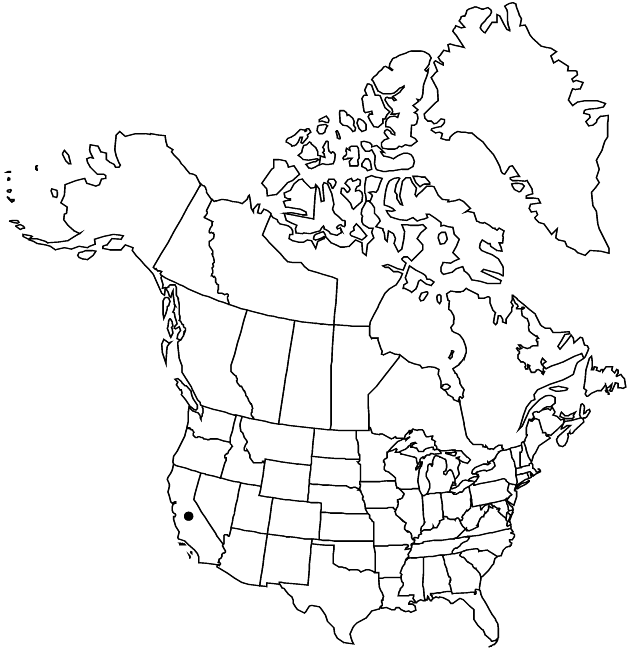Stephanomeria exigua subsp. macrocarpa
Madroño 21: 473, figs. 2, 3. 1972.
Heads borne singly or clustered along branches. Peduncles 5–10 mm, glabrous or puberulent. Calyculi of reflexed bractlets. Involucres glabrous or puberulent. Florets 6–8. Cypselae 5.5–6.5 mm; pappi of 13–19 tan bristles (widened bases persistent, connate in groups of 2–4, bristles plumose on distal 60–70%). 2n = 16.
Phenology: Flowering Aug–Sep.
Habitat: Dry, open sites on western slopes of the Sierra Nevada
Elevation: 300–1200 m
Distribution

Calif.
Discussion
Subspecies macrocarpa has rarely been collected; it is common within its limited range on western slopes of the Sierra Nevada. Its cypselae are the largest of any of the annual stephanomerias. Unlike the other subspecies of Stephanomeria exigua, which are self-incompatible and obligately outcrossing, subsp. macrocarpa is self-compatible and highly self-pollinating. In Kern County, hybrid individuals may be found wherever subsp. macrocarpa and subsp. coronaria make contact.
Selected References
None.